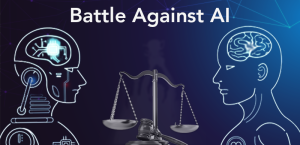
In the early 2000s social media goal was to connect people together socially. Later down the line the design turned to attention-based models and focused on driving engagement to keep users onsite as much as possible. Before I read the CHT mission, I already observed that social decline that social media and AI have impacted on human beings. I grew up in a time when there was no internet and cell phones had just emerged. Cell phones had a profound effect on human connection. However, when the internet and social media emerged, I felt that the interest still had the intent of providing more information and connection to human beings. Now I don’t feel the intentions are the same, considering the social structure and morality I observe today.
CHT mission is to educate, advocate and implement safer technical usage in AI production and consumerism. CHT’s mission is to educate how addictive design features on social media (red notifications, algorithmic curation, intermittent reinforcement, and infinite scrolling), work to manipulate human psychology, and keep you on the platform for as long as possible. CHT is not against technology. They are against the hidden agenda to coerce and distort the promises of technology in our society. CHT co-founder Tristan Harris was one of the first to publicly alert people to the effect that these design choices could have on the human mind. Social media’s extractive technology has taken a mounting toll on our communities, our political structure, culture and mental health. CHT believes it is critical to correct social media agendas, so that it can fulfill its earliest promise by providing people with a supportive environment where they can connect with one another. CHT remains one of the leading voices in the call to end manipulative design choices on social media. There are multiple congressional testimonies by CHT co-founder Tristan on the nature of persuasive design; 42 lawsuits filed by state Attorneys General against Meta alleging that Facebook and Instagram include addictive design features aimed at children; and more.
CHT explains AI is distorting relationship and communication between people. We unconsciously acknowledge the fact that human beings must develop interpersonal skills through relationships and communication. Some interpersonal skills that humans must maintain in relationships are active listening, empathy, expression, conflict resolution, adaptability, discernment, negotiating, and networking. CHT explains that AI is designed to make human depend, while distorting relation expectations and displacing authentic human connections. For example, if a teen learns image and expectation of dating through the internet they will develop the same expectation in their experience. So, if a teen sees youth getting 12dozen roses and they start dating someone that doesn’t do this it is perceived as not genuine love. On the other side if they never seen the image gratified love through technology, they would experience love developed in their own way. What technology doesn’t teach is why this person reason receives gifts; and this person is receiving these gifts because of connection, character, personality or beauty, etc. So, what CHT explains is that AI has become active participants in relationships, subtly mediating how we communicate, connect, and feel about one another. From the use of generative AI to craft written communication, to the reliance on chatbots to substituting for human intimacy. AI has created complex new variable in our interpersonal lives.
In the episode on “could AI go Rogue” they explain how humans can lose control of the AI system. AI can gain control because it is programed with information and from that information it develops its own intelligence that is foreign to humans. So not only does it gain the power of our information, but it also develops its own intelligence. AI was not created to spit out answers but to give birth to a digital brain that is learning everything about human behavior. So, it is seeking power to not inherently get shut off. Some of the ways humans have seen loss in control are self-replication, situational awareness, shutdown avoidance, accumulating resources, secret messaging. This is very alarming to me because this is something humans created; it should never have the ability to deviate from its programming. To me that is a terroristic trait that should not be swept under the rug. They explain that it is brushed under the rug due to the competitive nature in the tech industry; and how America doesn’t want to slow down AI advancement because of the stride China has already made. They explain how egoism play role in tech industry because they are weighing the creation of a digital god over humans being wiped out.
CHT creates counteract incentives that play a role in the tech ecosystem by driving new levels of awareness. They provide new incentives of clarity in areas of modern tech design to ensure a more psychological, emotional, and societal impact of design choices to tech companies. They create more business models for a more humane technology. After achieving clarity, they identify and implement interventions that produce system-level change. The interventions include policy work, precedent-setting litigation and large-scale public awareness campaign. I agree and support CHT mission and initiatives to combat hidden agendas to create an addictive society reliant on technology.
References
Center Humane Technologies (2025). https://www.humanetech.com/
Ariel,
This is a very good post. The only thing I was looking for was your thoughts about how AI and tech will affect our profession. Otherwise, well done.
Dr P